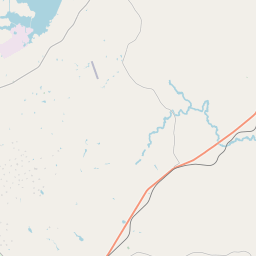First Baptist Church of Bremond







Local lore dates the origin of this church to 1865; however, the earliest written source indicates that a Bremond Baptist Church was in existence by 1869. The first members met in vacant store buildings under the leadership of the Rev. Mr. Harris. In 1869 or 1870 the church joined the Waco Baptist Association. A red brick structure was erected on this site in 1871. An 1876 record lists the church as the First Missionary Baptist Church of Christ of Bremond.
With a membership of 148 in 1879, the church began to prosper under the pastorate of the Rev. C. C. Lee. The congregation joined the Little Brazos Association in 1880 and drew up a church covenant four years later. In 1899, the church joined the Robertson County Baptist Association. By 1933 the church was well established and deeply invested in community and missionary work. Plans for new facilities were underway by June 2, 1945, when a check to apply to a new building was received. That night, a storm destroyed the roof of the original structure. Through insurance, loans from members and gifts, construction on a modern edifice was completed in 1946. Church members gave their own monies to defray the church's debt.
First Baptist Church members have long been active in worship and service. Through missionary projects in Mexico and Brazil, local community work, interdenominational services, and educational support, the congregation continues in the traditions of its founders
As one of the most visible programs of the Texas Historical Commission (THC), historical markers commemorate diverse topics in Texas history, including: the history and architecture of houses, commercial and public buildings, religious congregations, and military sites; events that changed the course of local and state history; and individuals who have made lasting contributions to the state, community organizations, and businesses.
The world's first rodeo was held in Pecos, Texas in 1883. The event included bronco riding, calf roping, and bull riding.
In the early 1870s, ranchers began to settle in what is now Roberts County. The region's vast grasslands provided ample grazing opportunities for cattle, attracting ranchers from across Texas. The county was officially established in 1876, named after John S. Roberts, a significant figure in the movement for Texas statehood.
Throughout the late 19th century, cattle ranching dominated the local economy, and the population grew steadily. In the 1880s, the establishment of railroads in the region further facilitated the increase in trade and transportation of cattle, allowing for better access to markets outside the county. This growth continued into the 20th century, with the development of better irrigation techniques and the expansion of farming activities.
However, like many rural areas, Roberts County faced challenges during the Great Depression. The Dust Bowl of the 1930s devastated agricultural practices in the region, causing massive crop failures and forcing many residents to abandon their farms. The federal government's New Deal programs aimed to provide relief and recovery for farmers in the area, leading to the implementation of soil conservation measures and the construction of dams and reservoirs.
Since then, Roberts County has experienced periods of economic growth and decline. Today, the county's economy is still primarily based on agriculture, with cattle ranching, farming, and wind energy production being major industries. The county's rich history and dynamic present make it an interesting and important part of Texas' heritage.
Roberts County Timeline
This timeline provides a concise overview of the key events in the history of Roberts County, Texas.
- 1876: Roberts County is officially established by the Texas legislature.
- Late 1870s: Buffalo hunters begin to populate the area.
- 1882: The first post office, "Roberts", is established.
- 1890: The county population is recorded at 565 residents.
- Early 1900s: Farmers and ranchers settle in the area, establishing the agricultural economy.
- 1933: The Dust Bowl hits Roberts County, causing severe soil erosion and economic hardships.
- 1950s: Oil and gas exploration begins, leading to increased economic activity in the county.
- 1980: The county reaches its peak population of around 1,400 residents.
- 1990s: Population decline begins as job opportunities decrease.
- Present: Roberts County continues to be a rural community with a focus on agriculture and energy industries.